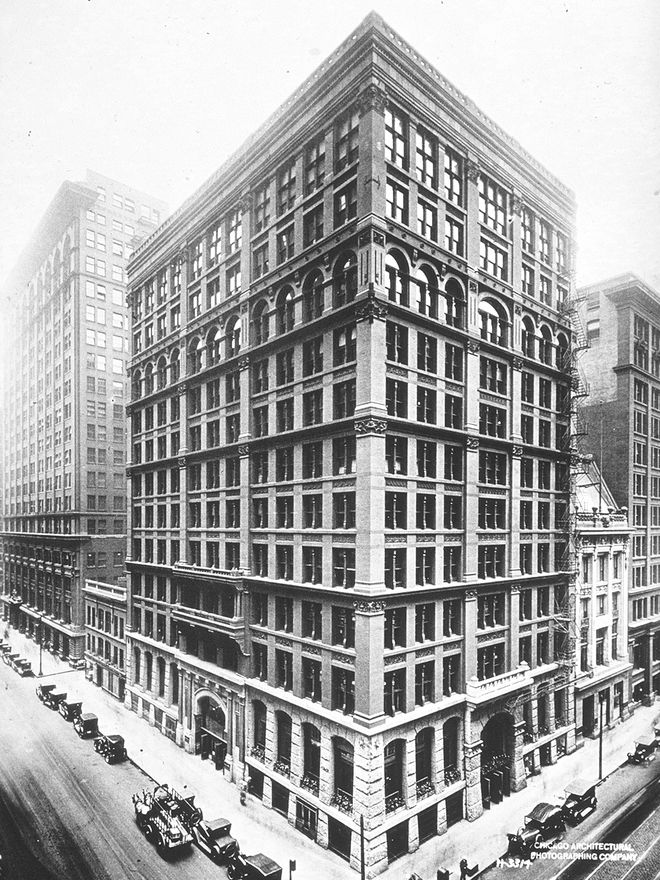September 3rd has been set aside to observe National Skyscraper Day.
This idea takes me back to my years growing up on our dairy farm. One of my favorite hangouts was our silo. A silo, for those not familiar with the term, is a large, cylinder-shaped tower to hold silage (which is just a fancy word for some sort of grass cut in the summer and stored for the winter). Just think of it as a building built to hold a giant cow salad that doesn’t have to be dried out and baled up like a hay-bale. I would daydream about what fun it would be to convert our silo into a house. It would have a Barbie-style round elevator going up the middle, and the top floor was reserved for my observatory that looked up into at the starry night sky — through the completely glass dome, of course. I think in reality it was probably around 80 feet tall, plus another 15-20′ for the green-and-white domed top, but it felt like a skyscraper to me. Especially when I would climb up the outside ladder. I shudder to think how I’d climb out on the little push-up platform at the top, then do flips around the bar. I think it was my way of determining I would no longer be scared of heights.
Today, the wisdom of quite a few more years — and a fully-formed frontal cortex — would make me hesitate to let my own kids climb up even the fully-enclosed interior ladder on the front side. It’s been several years since a tornado collapsed that old silo, and I’m relieved I won’t have to make that decision.
So, let’s turn our thoughts to National Skyscraper Day. There are a few questions that immediately come to my mind:
- What determines if a building is considered a skyscraper?
- When and where was the first skyscraper built?
- Where is the tallest skyscraper today?
- And, how can we incorporate Skyscraper Day into our school day?
I can’t help but think of the Tower of Babel when I think of the first skyscraper in history. While I don’t think the thought process today considers avoiding floods like theirs may have, there is definitely pride involved as people compete (often in secret) to guarantee they’ve built the largest inhabitable building on the face of the Earth.
The Home Insurance Building in Chicago, IL — later called the “Father of the Skyscraper” — was built in 1884. It’s jaw-dropping tenth story topped out at a whopping 138 feet … not too much taller than my own childhood “skyscraper.” Two additional floors, visible in the photo below, were eventually added to the top of the building in 1890.

The term “skyscraper” itself wasn’t coined until 1888, a few short years after the Home Insurance Building was completed. It’s funny to think of a ten-story building as being such a marvel, but it held that title for several years before being displaced by ever-taller structures in Chicago and New York. In fact, various skyscrapers in those two cities allowed the United States to claim the bragging rights of being home to the world’s tallest building until 1998, when the Petronas Twin Towers in Malaysia were completed, surpassing the height of any skyscraper on U.S. soil.
In 1969, the Council of Tall Buildings and Urban Habitat (CTBUH) was formed in Chicago. They are considered the final authority on the official height of a building, and maintain an updated global list of the tallest skyscrapers. The CTBUH are the ones to announce the much coveted title of “The World’s Tallest Building” when a new building attempts to challenge the existing record holder. The determining factors are:
- A building’s height to the architectural top. This includes any spires, but does not include flag poles, lightning rods, or antennae.
- Highest occupied floor.
- Height to tip (this goes to the very tip top, and does include the antennae, flagpoles, and anything else a building might have).
A building won’t be considered for the world’s tallest list until it’s structurally complete and at least partially open for business.
To be considered a skyscraper today, a building has to have continuously habitable floors, and be at least 350 meters — or just over 1,148 feet — tall.
The world’s tallest building today, since 2010, is the Burj Khalifa in Dubai; it is deemed “mega-tall”and stands a whopping 2,717′ (828 meters) and includes 163 stories …WOW! What amazing feats of engineering! Something to be proud of, for sure. My childhood skyscraper fantasies just officially collapsed as a glorified mole hill. That is kind of amazing though, right? And probably exactly what people once thought about that ten-story building in Chicago, just a little over 130 years ago. Makes me wonder what, God-willing, our skyline will look like in another 100 years. Kinda like something from The Jetsons, maybe?
My childhood skyscraper fantasies just officially collapsed as a glorified mole hill. That is kind of amazing though, right? And probably exactly what people once thought about that ten-story building in Chicago, just a little over 130 years ago. Makes me wonder what, God-willing, our skyline will look like in another 100 years. Kinda like something from The Jetsons, maybe?
Now that we’re all inspired, how about letting the kids use their creativity to build their own skyscrapers? I’m thinking a bottle of glue, some string, and popsicle sticks for a friendly competition in a homeschool group. Or maybe a chance to work together as a team, as we recently did with friends, where each group of kids gets a bag of marshmallows, a box of toothpicks or bag of pretzel sticks (spaghetti works well, too), and 10-20 minutes to build the tallest structure.
However you choose to celebrate, start out the new school year with some fun as you observe today’s National Skyscraper Day!
Visit our archives for more creative homeschooling ideas!
 Please visit their online store for excellent, scripture-based homeschooling resources!
Please visit their online store for excellent, scripture-based homeschooling resources!

What a great idea — throwing out some spaghetti or pretzels with marshmallows might cover both dessert and the mixer game next time we have college students over! Thanks, Bridgitt!
Haha, I think college students always welcome food. 😋